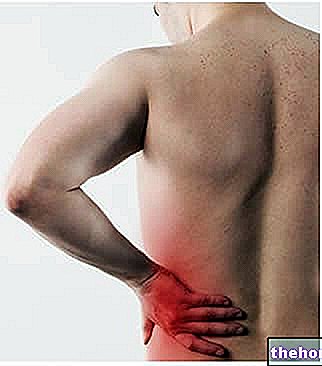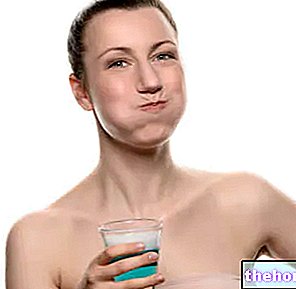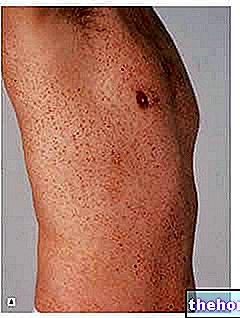Generality
Acupuncture is a therapeutic practice of alternative medicine, which involves the insertion of small needles on the surface of the human body, in order to promote the health of the individual undergoing the treatment.

The patency of the meridians guarantees the correct flow of life force and the well-being of the human body; on the contrary, an obstruction of the meridians alters the flow of the Qi and can induce the appearance of problems, such as chronic pain, back pain, migraine, etc.
According to those who practice acupuncture, the stimulation of certain areas of the human body, through the insertion of specific needles, would restore the flow of Qi, where it is not optimal.
Currently, the practice of acupuncture lacks any scientific foundation.
What is acupuncture?
Acupuncture is a therapeutic practice of alternative medicine, which involves the insertion of small needles on specific areas of the human body, with the ultimate aim of promoting the health and well-being of the individual undergoing the treatment.
In other words, acupuncture consists in inserting special needles on the surface of the body, in order to bring benefits to the body.
WHAT IS THE NAME OF WHO DOES ACUPUNCTURE?
The therapist who practices acupuncture is called an acupuncturist.
WHO CAN PRACTICE ACUPUNCTURE IN ITALY?
In Italy, only medical and veterinary graduates can practice acupuncture.
Under Italian law, anyone who practices acupuncture without the aforementioned requirements commits an act punishable by law (N.B: the law in question dates back to 1982).
ACUPUNCTURE IN EUROPE AND IN THE WORLD
Acupuncture is a popular practice in major countries such as the United States, China, Australia, the United Kingdom, Germany, Sweden, Norway, Switzerland and Italy.
According to some statistical surveys, at the present time it would be the most widespread alternative medicine technique in Europe.
ACKNOWLEDGMENTS
Acupuncture has received recognition and approval not only by the health services of the various nations of the world (eg: the National Health Service of the United Kingdom or the National Institutes of Health of the United States), but also by the WHO, the World Health Organization.
HISTORY
Acupuncture comes from so-called traditional Chinese medicine.
According to some historical studies, the first forms of acupuncture date back as far as 100 BC.
From China, acupuncture first spread to the geographical areas in which Japan, Taiwan, Korea and Vietnam now reside. Then, around the sixteenth century, it also reached Europe: some Portuguese missionaries, who had traveled extensively in the Far East.
In the following centuries, acupuncture was the subject of numerous debates, between those who considered it a useless practice and those who instead promoted its therapeutic powers.
Coming to more modern times, there are three important dates regarding the history of acupuncture: 1939, 1972 and 2010.
1939 is the year in which a French diplomat named George Soulié de Morant published a personal translation of the terms used in Chinese texts, which spoke of acupuncture. It is thanks to Morant's work that the terms “meridian” are due. “Vital force” etc., very popular among those who practice modern acupuncture.
1972 represents the year in which, in the United States (specifically in the State of Washington DC), the first legal center for the practice of acupuncture was established.
Finally, 2010 is the year in which UNESCO declared acupuncture a Cultural Heritage of Humanity.
Operation
Those who practice acupuncture believe that, in the human body, there is a system of channels - called meridians - through which a fundamental energy for life flows. This energy takes the name of "life force" or Qi (pronounced "chee").
The presence of pain in a certain part of the body or a particular disorder is then traced to an underlying obstruction of specific meridians, which prevents the normal flow of life force.
In other words, certain problems that the human being can develop derive from an alteration of the flow of Qi, along the network of meridians.
The practice of acupuncture is proposed as a method capable of freeing the obstructed meridians, thus restoring the normal flow of Qi inside the human body.
HOW TO RELEASE THE MERIDIANS: THE ACUPUNCTURE POINTS
In the theories of those who practice acupuncture, the meridians are found in precise positions of the human body. In order to free them - the acupuncturists affirm - it is necessary to stimulate the precise anatomical area in which they reside. The stimulation and liberation tools are the small needles. mentioned above.

Indications
According to its promoters, acupuncture would be of benefit in case of:
- Chronic pain;
- Back pain, especially low back pain;
- Muscle-tension headache;
- Migraine;
- Joint pain, resulting from diseases such as osteoarthritis or rheumatoid arthritis;
- Toothache;
- Nausea and vomit;
- Sleep disturbances (e.g. insomnia);
- Post-operative pain.
Curiosity
In ancient times, acupuncture was indicated only for pain.
Those who practiced it at that time inserted needles in the anatomical areas where the patient complained of the painful sensation.
How it is done
Generally, the practice of acupuncture involves a cycle of at least 10 sessions.
The first session is different from all the others, because it includes a preliminary phase in which the acupuncturist investigates the patient's state of health and performs a sort of medical history.
This preliminary phase has a "fundamental importance, as it provides the therapist with the information necessary to establish the acupuncture points, on which to act through the needles.
ACUPUNCTURE NEEDLES
A few centimeters long, acupuncture needles are pre-sterilized and disposable metal objects (so they are thrown away immediately after their use).
INSERTING THE NEEDLES
Before the insertion of the needles begins, the acupuncturist invites the patient to undress (if treatment of areas generally covered by clothing is clearly envisaged) and to sit on a chair or on a bed.
Only once the patient proves to be at ease can the needle insertion phase begin: the therapist gently inserts them just under the skin and leaves them in place as he sees fit.
The number of needles used depends on the extent of the patient's symptoms.
HOW LONG CAN A SESSION LAST?
An acupuncture session can last from 20 to 40 minutes.
Generally, the longest sessions are the first of each cycle, as they include the medical history and investigation of the patient's state of health.
However, it should be noted that the duration also depends on the entity and number of problems reported by the patient.
Related practices
There are various practices closely related to acupuncture. These practices include: acupressure, auriculotherapy, electroacupuncture, cupping, tuina, moxibustion and apipuncture.
ACUPRESSURE
Acupressure is a therapeutic practice of alternative medicine, based on the same principles as acupuncture. Therefore, he believes in the existence of meridians, of the life force (or Qi) and in the stimulation of certain critical areas of the body, in order to re-establish the flow of Qi where it is altered.
To restore the normal flow of the Qi at the level of obstructed meridians, those who practice acupressure resort to pressure on the critical areas of the body, using the fingers (acupressure), elbows or specific instruments (eg: wooden sticks or special metal wheels).
ELECTROACUPUNCTURE
Electroacupuncture is a form of acupuncture that involves the electrical stimulation of the needles, after their insertion on the surface of the body.
CUP
Cupping is a therapeutic practice of alternative medicine, which involves the application of particular jars on the surface of the human body, in order to bring benefits to the person undergoing the treatment in question.
According to its promoters and those who practice it, cupping would be indicated in case of chronic pain, deep lesions of the muscular or connective tissue and swelling.
Risks and complications
If practiced by a qualified therapist, acupuncture is a substantially safe and low-risk practice. In fact, only in rare circumstances, does it give rise to side effects.
The possible side effects of acupuncture include:
- Pain upon insertion of the needles by the acupuncturist;
- Leakage of blood (haemorrhage) from the needle insertion areas;
- Appearance of hematomas in the points where the acupuncturist has inserted the needles;
- Abnormal sleepiness
- Malaise;
- Feeling faint or dizzy
- Worsening of pre-existing symptoms (ie the picture of symptoms, for which the patient has recourse to "acupuncture).
The way acupuncturists use needles makes acupuncture a minimally invasive alternative medicine practice.
Contraindications
The practice of acupuncture is contraindicated to:
- People with a bleeding defect, such as haemophilia, and individuals who are on anticoagulant therapy. This contraindication is explained by the fact that the aforementioned conditions increase the risk of blood loss, from the areas d " insertion of needles.
- People with a metal allergy. Acupuncture needles are metal objects, so in people with a metal allergy they could evoke a number of very annoying adverse effects.
PREGNANCY AND ACUPUNCTURE
Practicing acupuncture on a pregnant woman is safe, as long as the acupuncturist does not go to insert needles in some anatomical areas considered potentially dangerous for the survival and normal development of the fetus.
All this explains why acupuncturists, when dealing with women of childbearing age, ask them if they are pregnant or not.
ACUPUNCTURE ON CHILDREN
If performed by qualified personnel, the practice of acupuncture on children is as safe as the practice on adults.
Criticisms
Currently, no scientific and clinical studies have demonstrated the effective therapeutic efficacy of acupuncture. This explains why many doctors advise against the aforementioned practice, in the presence of health problems for which valid treatments of traditional medicine exist.
WHAT DO THE EXPERTS DECLARE?
In 1990, a "major US non-profit medical organization dealing with health fraud and known by the acronym NCAHF (National Council Against Health Fraud), he has declared:
"Research over the last twenty" years has failed to prove that "acupuncture is effective against any disease ... the perceived effects of acupuncture are likely caused by a combination of expectation, suggestion, revulsion, conditioning and other psychological mechanisms"
From these words, the position of the NCAHF is quite clear: the well-being that acupuncture produces is not real, but is due to the so-called placebo effect.
Despite the lack of scientific evidence to support the therapeutic efficacy of acupuncture, the debate on the validity of acupuncture continues.




























